
We got up and ate before heading off to Teravaka, the highest point on Rapa Nui. Teravaka is over 500 meters high, and is the most recent volcano on the island. We saw no signs that it has been active any time recently. The views from Teravaka were phenomenal – unimpeded in 360 degrees, and surrounded on all sides by water for as far as the eye could see. The drive up to Teravaka was interesting – there were 8 of us in the car, the driver, Tito, the Swiss couple, a Brazilian couple, and us. The road was quite steep, with several ruts, and we kept hearing what we think was the rear tire scraping up against the wheel well. At some parts we weren't sure the van would make it up the hill. But we did make it up, and we figured driving was much better than walking.

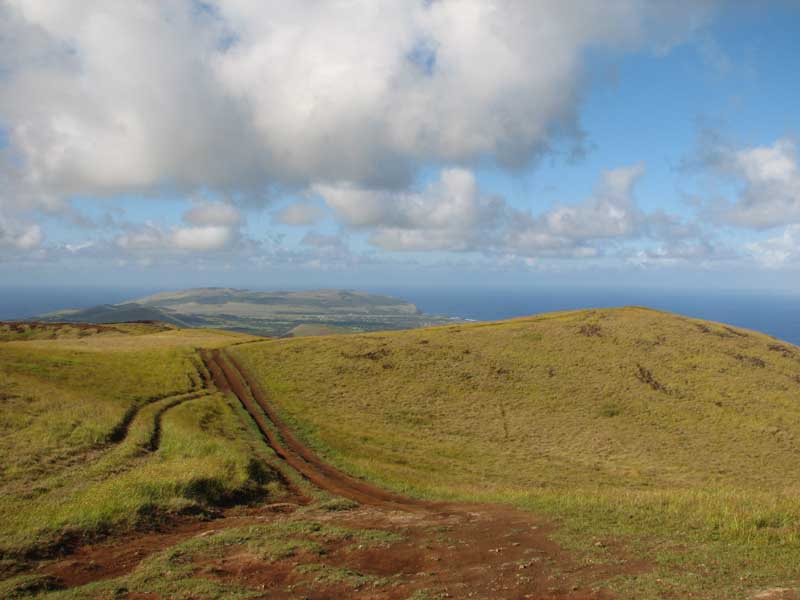
From the top we started heading East towards Anakena. It was all-downhill, and through a bunch of low grass. It was overcast, and there was a breeze in our face pretty-much the whole time. In other words, the weather was a complete 180 from the day before. There weren't many artifacts or villages – perhaps because fresh water was tough to come by in the middle of the island, but the rolling hills themselves were very nice to look at. The wet grass did get everyone's legs dirty, however. The entire time we had an unimpeded view of Poike and Rano Raraku to the East. We got several good pictures of the East side from various vantage points during the hike.
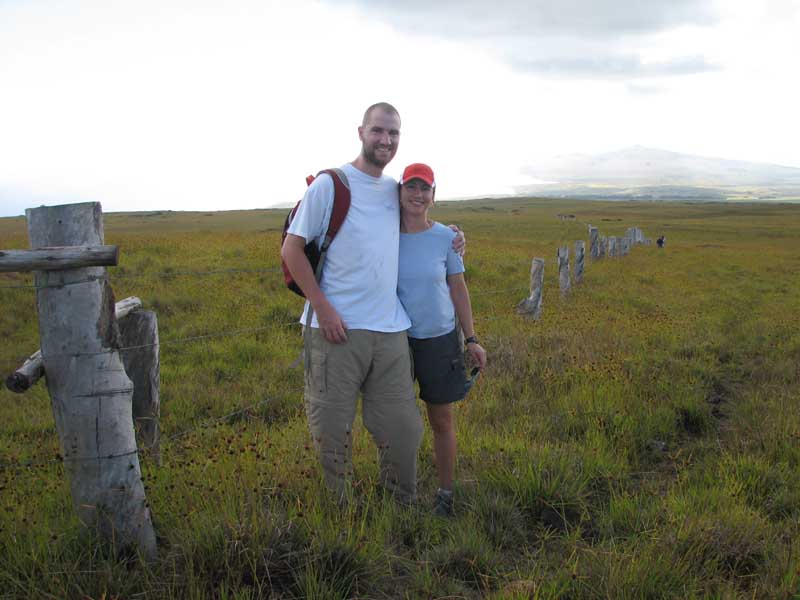
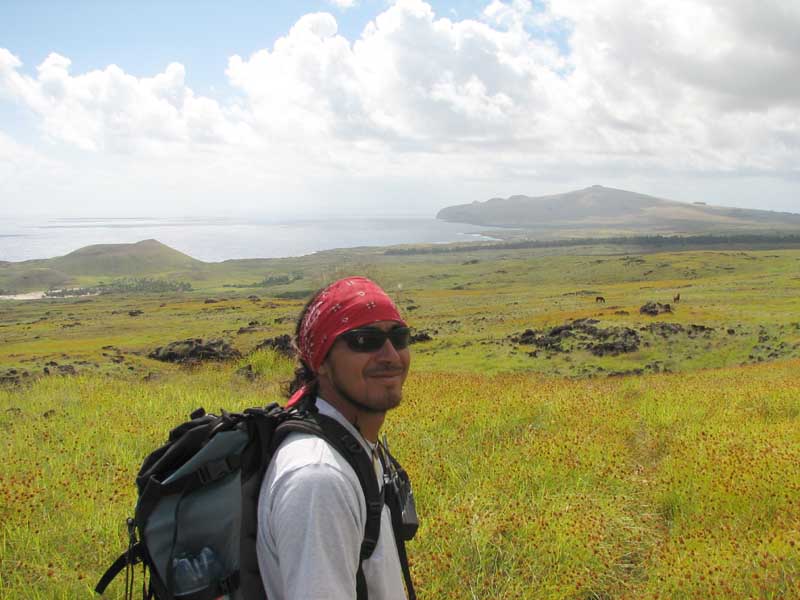
At Anakena, Justin got more pictures and some video of the ahu, the moai, the beach, the ocean, and the palm trees – plus a bunch of horses. Justin also remembered to wear his shoes this time, which made things quite a bit easier. As we were leaving, Tito realized he had misplaced his walkie-talkie – we looked for a bit but couldn't find it. We found out later that someone else found it and returned it to Explora. We left Anakena and headed southeast past the quarry to Ahu Tongariki, one of the restored ahu.

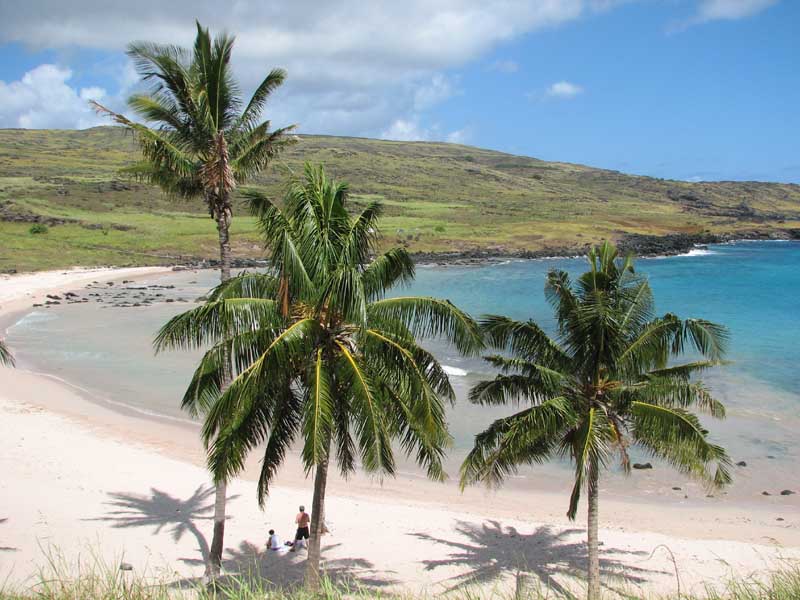
Tongariki was restored with the assistance of a Japanese crane company in the early 1990s. It has 14 large Moai, plus a single Moai atop a nearby ahu. There was also another fallen moai that had never quite made its way onto the ahu. The way to tell is by looking at the eyes, or rather the eye socket. The eye sockets were not carved until the moai was standing atop the ahu, at which time the coral eyes were put in. So the archaeologists were able to tell which moai were knocked over and which never made their entire journey.
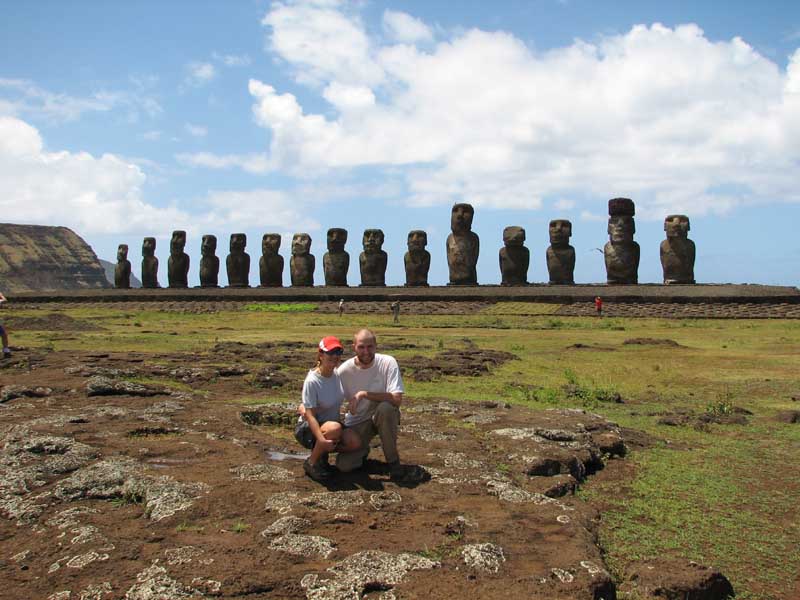
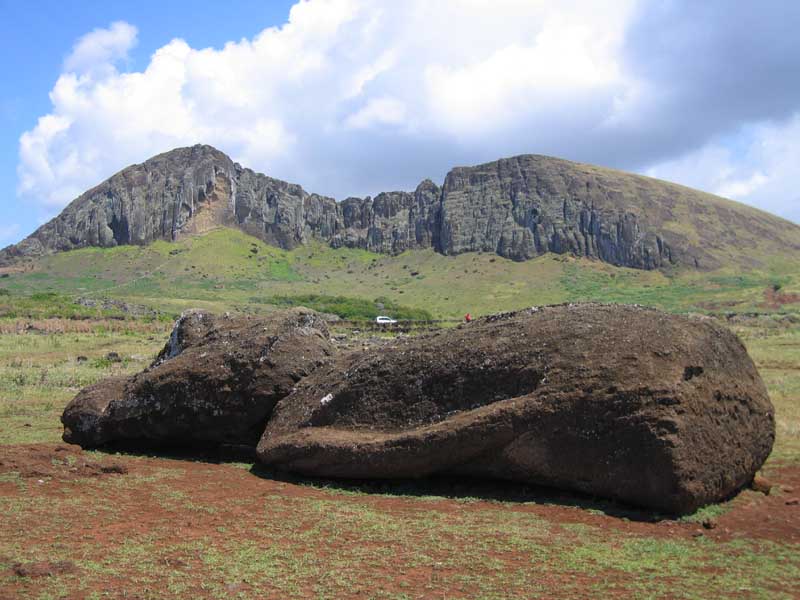
Tongariki was very impressive because of the large size compared to other ahu. We had to stand several hundred feet from the ahu to fit all of the moai into the picture. The setting was also very nice – right near the ocean, with the crashing waves in the background, Rano rakaru and Poike nearby, and a visible offshore island just south of Poike.
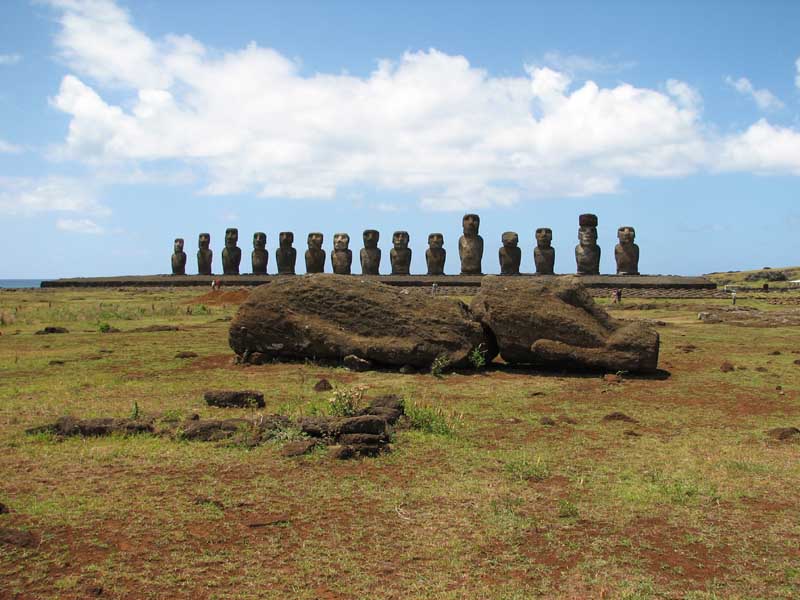
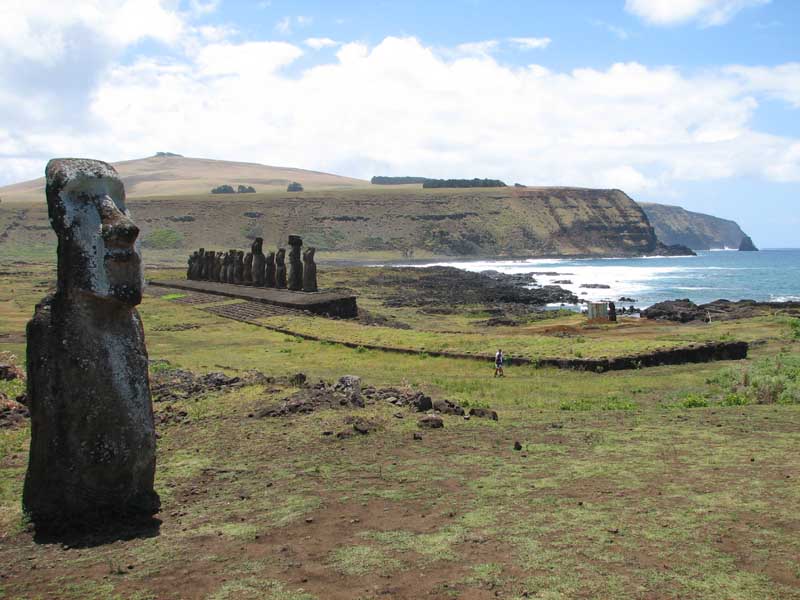
We went from Tongariki to lunch along the southern coast. Another group, who had gone on a different excursion that morning, was already there. Explora will not take more than 8 people on an excursion, so if there are more than 8 guests there are multiple excursions. We did find out that we were with Tito because he was the only guide who knew French, and we were on the same excursions as the Swiss couple. Again, Explora had set up several umbrellas for lunch, and had set out quite a spread to eat. We could choose from roast beef, ceviche, tuna sashimi, rice, green salad, bread, prosciutto, brownies, and fruit. For drinks there was water, soda, beer, and wine.

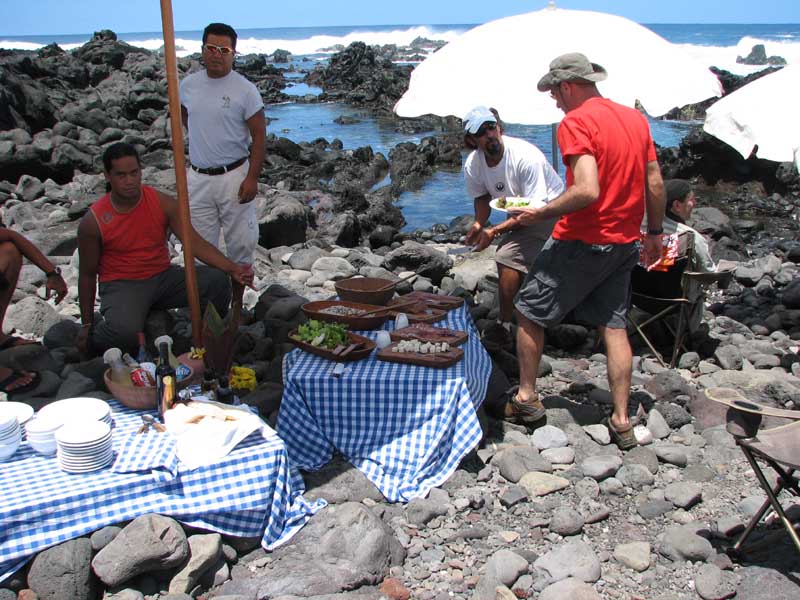
There were two small pools right by the ocean, each separated from the ocean by natural rock walls. Within the pools there were several corals that could be seen through the top of the water. Justin got in the pools and looked around. He also got up on some rocks to shoot some video and pictures of the crashing waves. He and Tito were the only ones up there when a large swell came in and drenched the whole area – Justin caught some of it on video before shutting off the camera. Tito's voice can be heard in the background suggesting that we run for cover. The other tourists thought it was impressive that Justin "braved" the waves, but it was just a little salt spray – looked much worse than it was.

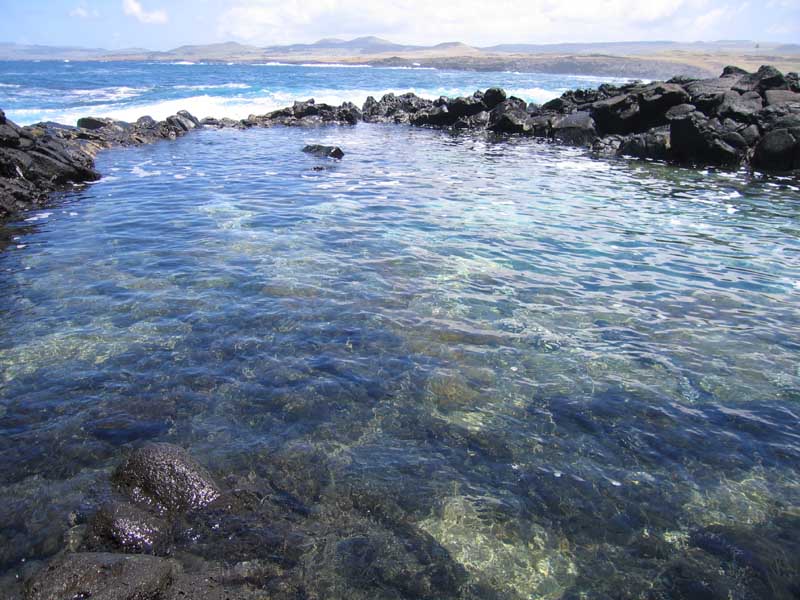
Before going back to the hotel, we stopped in Hanga Roa to check out the spear throwing contest. We saw our usual driver, Singha – he had competed that morning in a couple of competitions, winning one and coming in fourth in the other. We went back to the lodge for a bit, then headed back to see more competitions. This time the competition was a banana race – men running a relay race while carrying 20 kilograms (44 pounds) of bananas around their neck. Also, they were wearing nothing but a thong and some body paint. One of the tourists in our group, a Scottish lady, seemed to forget that she had a boyfriend back home. Crystal didn't seem that interested, perhaps because she was checking our female guide, Uri, who had picked us up from the airport a couple days earlier. Uri kind of resembles Marion Jones, but a Rapa Nui version.

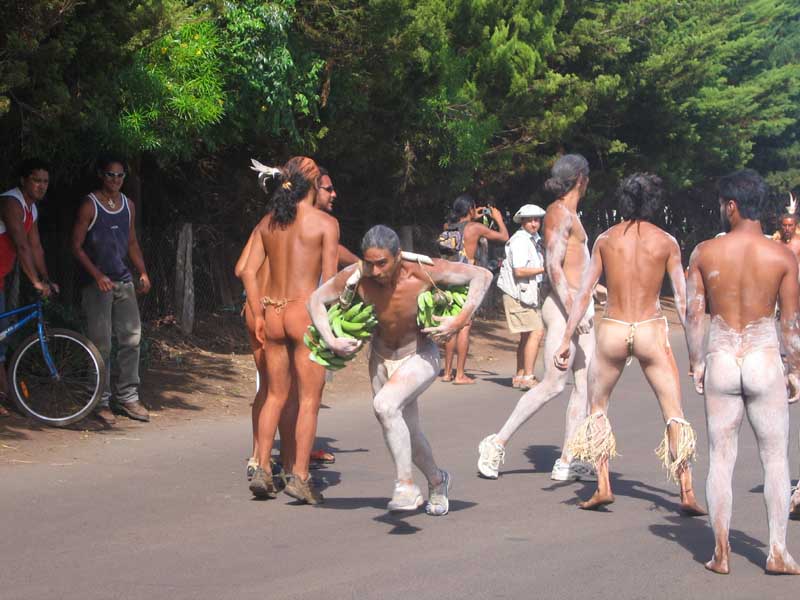
Singha's team won the race, but apparently "El Champion" could not get a ride back to the lodge without us. So he sat next to Justin in the van. Justin has never felt less manly than he did sitting next to Singha.
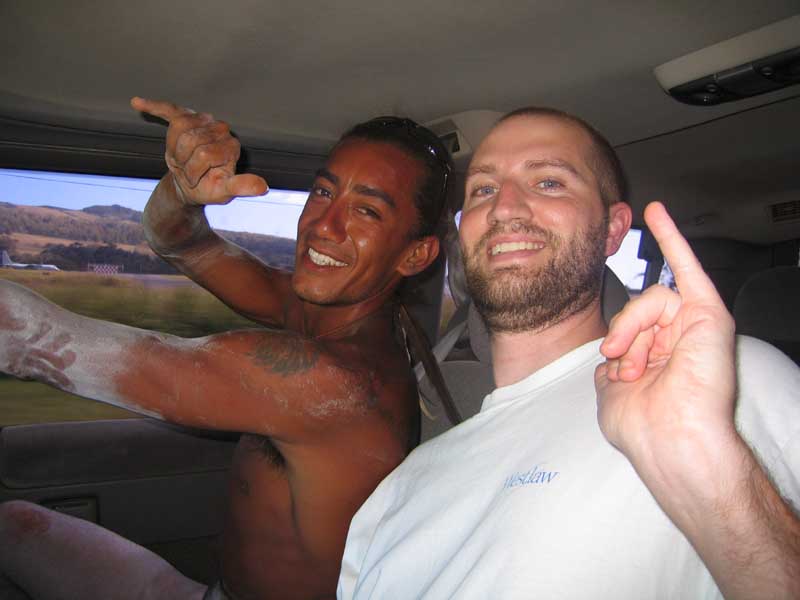
We came back to the lodge for just a bit, then headed off to Orongo with Tito and the Swiss couple. We were supposed to start near Vinapu and walk up to Orongo, but for some reason – perhaps the late hour – we just drove straight to the top and looked around. The crater at Orongo is filled with water and water plants, and is 2km across. We first looked at the crater itself, then walked up to the edge of the island with the crater on the one side and the cliffs on the other. There were several houses in the village. Apparently the houses were used only a few weeks out of the year, just before and during the Birdman competition.
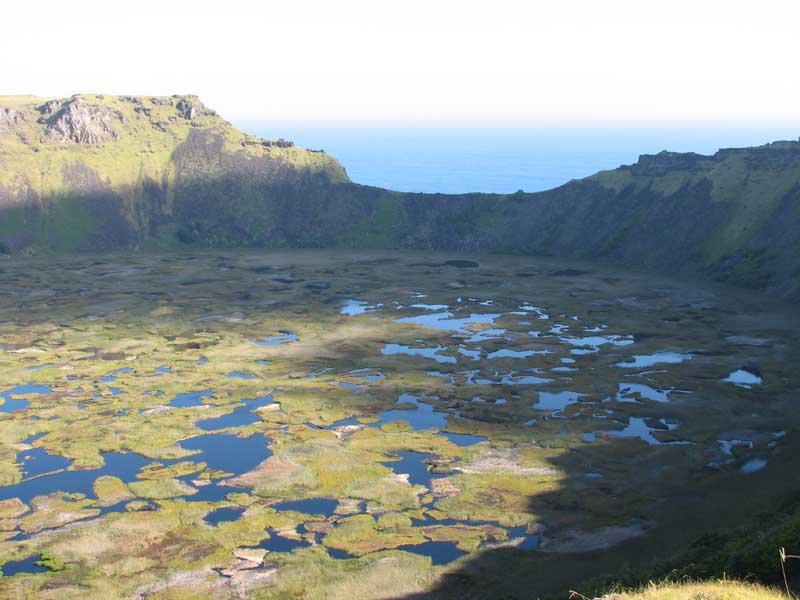
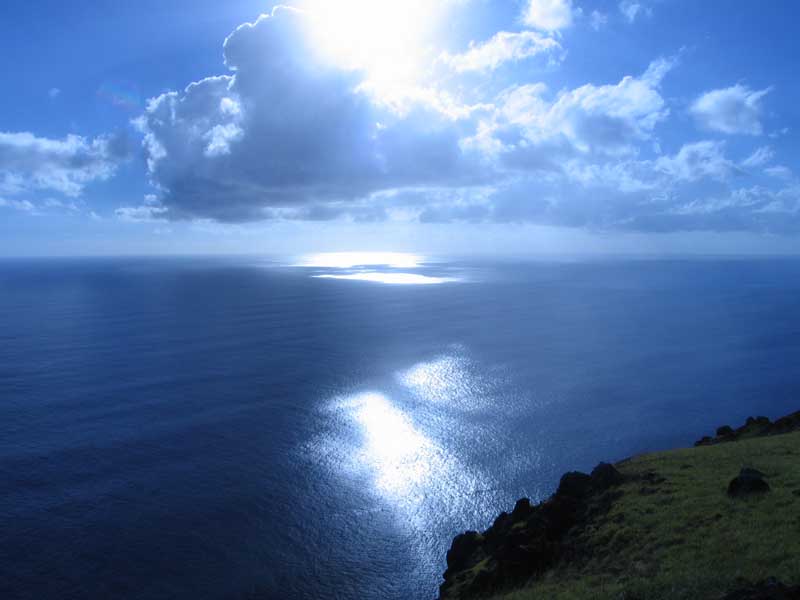
The cliffs for the competition were between 250 and 300 meters more or less straight down. The competitors would climb down these cliffs, swim 2km across open ocean (filled with Tiger sharks), climb onto one of the offshore islands, Motu Nui, and wait on Motu Nui for the first egg of the season from the Sooty tern. Once the first egg was received, the competitor would yell out across the ocean (back to the people at Orongo) that he had the egg. Then he would put the egg into a pouch on his forehead, swim back across the ocean, and climb up the cliff – without breaking the egg. The winner's tribe would then control the island for the next year.
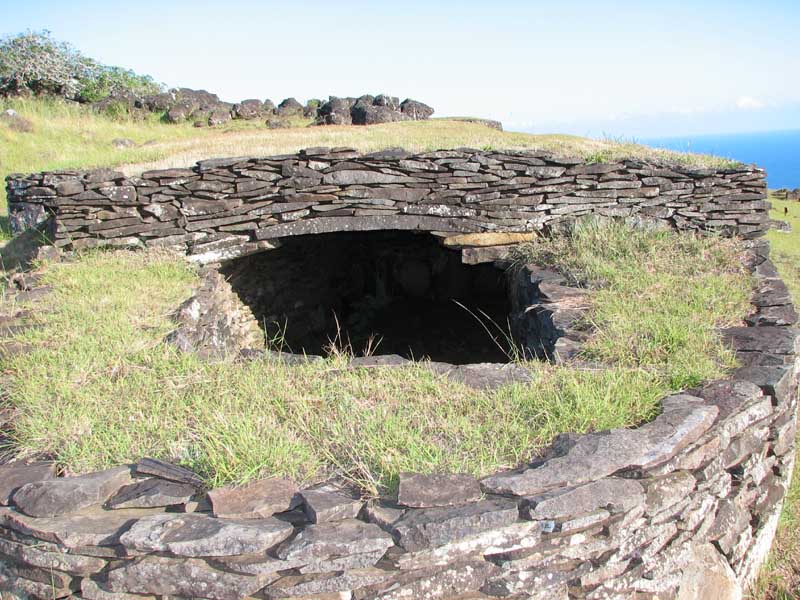
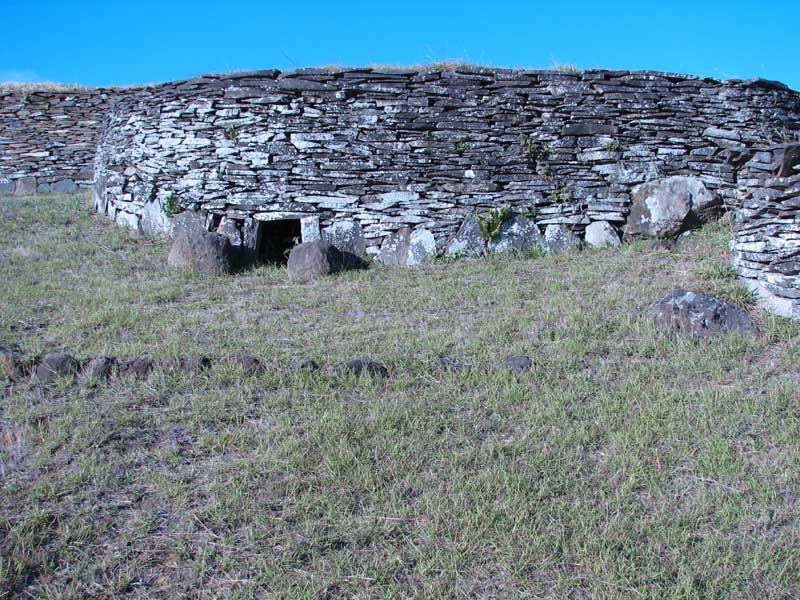
We had originally wanted to take a boat trip out to Motu Nui to take a look around. The views back at Orongo are supposedly fantastic, and there are caves on the island with petroglyphs. We did not have enough time for this, though. After looking down at the ocean around Motu Nui, however, it was probably for the best. The ocean currents were very up and down, and the only way to get onto the island is to stand in a boat near the shore, then jump from the boat onto the island when the water level is at its highest. It did not look easy, or fun.
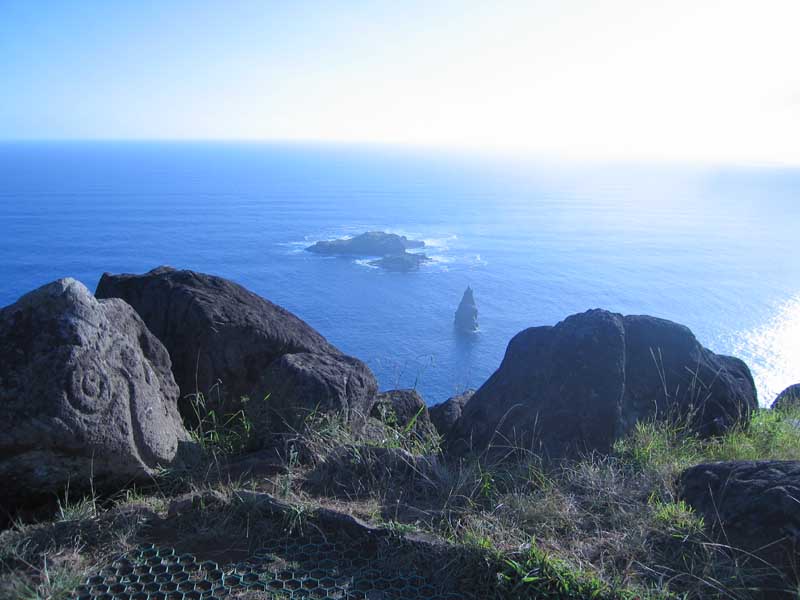
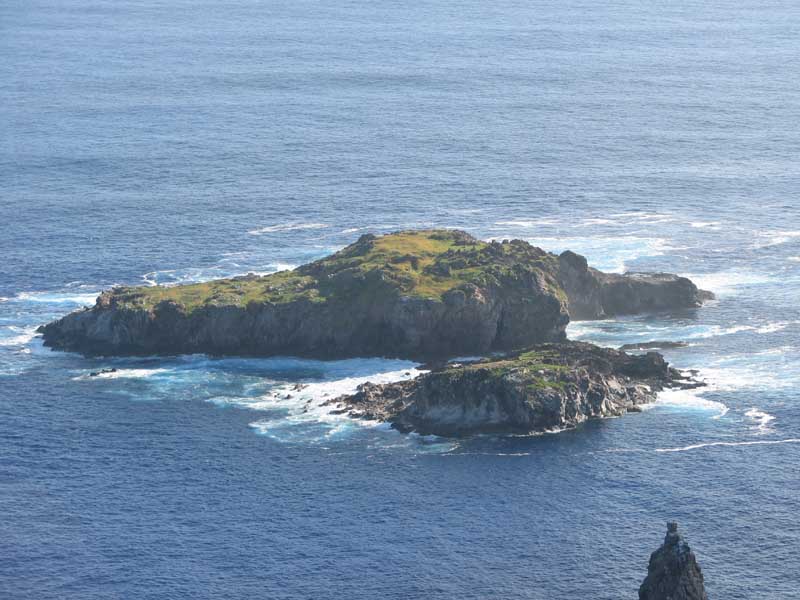
As we were getting ready to leave, we asked Tito about his son. His girlfriend had not told him that she was pregnant – apparently it was going to be a surprise – when one night he had a dream about a massive tuna. He had no idea what the dream meant, but it was very unusual and he felt it must have some meaning. So he and his girlfriend went over to Tito's grandmother's house the next morning. Tito told her that he had a dream, and wanted to know if she could help him figure out the meaning. He started to tell her that he had a dream about a large tuna when she interrupted and said, "Stop right there. Your girlfriend is pregnant, and it will be a boy." Needless to say, both he (and especially his girlfriend) were awestruck. Tito also pointed across the crater and said – "that's where my son came from."

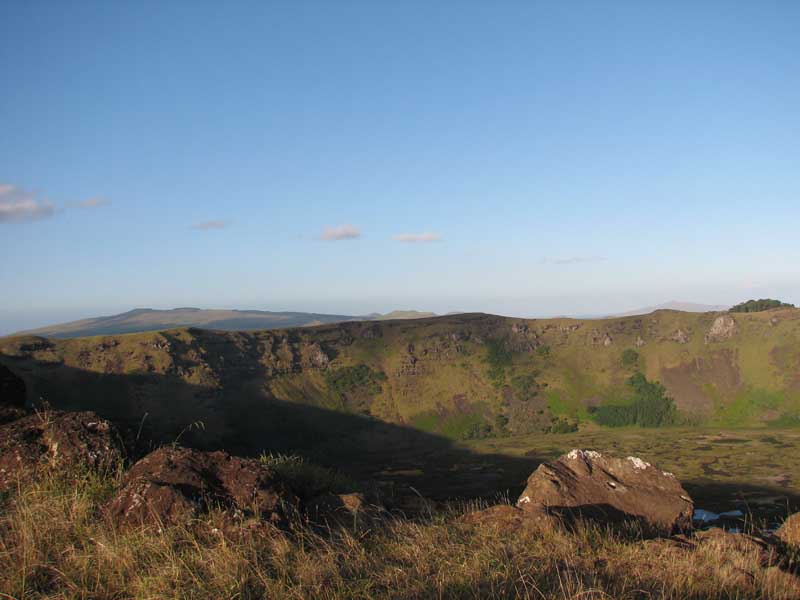
We got back to the lodge, ate dinner, and went to sleep.